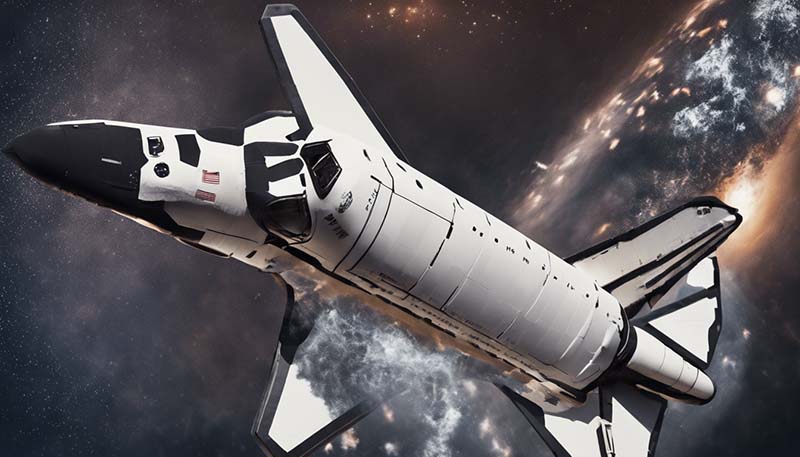The Space Shuttle Program: A Timeline of Triumphs and Tragedies
The Space Shuttle Program, which ran from 1981 to 2011, was a remarkable chapter in the history of space exploration. It marked the beginning of a new era of reusable spacecraft, allowing for more frequent and cost-effective space missions. However, this program also witnessed some of the most heart-wrenching tragedies in the history of spaceflight. In this article, we will take a look at the timeline of triumphs and tragedies that shaped the Space Shuttle Program, highlighting its most significant milestones and the lessons learned from its successes and failures.
Early Development (1960s-1970s)
The concept of a reusable spacecraft dates back to the 1960s when NASA began exploring the idea as a way to reduce the costs associated with space travel. In 1972, NASA officially launched the Space Shuttle Program, with the goal of creating a fleet of reusable spacecraft that could transport crew and cargo to and from low Earth orbit.
Columbia's First Flight (1981)
On April 12, 1981, NASA's first Space Shuttle, Columbia, made its maiden voyage into space. This historic mission, known as STS-1 (Space Transportation System), marked the beginning of a new era in space exploration. The successful launch and landing of Columbia demonstrated the feasibility of reusable spacecraft and set the stage for the future of the Space Shuttle Program.
Advertisement
Challenger's Sombre Farewell (1986)
On January 28, 1986, the Space Shuttle Challenger (STS-51L) broke apart just 73 seconds after launch, resulting in the tragic loss of all seven crew members on board. The disaster was caused by the failure of an O-ring seal in the solid rocket booster, which allowed hot gases to escape and ultimately led to the explosion of the external fuel tank. The Challenger disaster was a turning point for the Space Shuttle Program, leading to a temporary suspension of shuttle flights and a renewed focus on safety and reliability.
Hubble Space Telescope (1990)
On April 24, 1990, the Space Shuttle Discovery (STS-31) successfully deployed the Hubble Space Telescope into orbit. The Hubble has since become one of the most important and productive scientific instruments in history, providing breathtaking images of the universe and contributing to our understanding of the cosmos. The telescope's initial issues with blurred vision were corrected in 1993 with the help of the Space Shuttle, and it has continued to operate for over three decades, revolutionizing our understanding of the universe.
Columbia Disaster (2003)
On February 1, 2003, the Space Shuttle Columbia (STS-107) disintegrated during re-entry, killing all seven crew members. The disaster was caused by damage to the shuttle's left wing from foam insulation that broke off from the external fuel tank during launch. The foam strike compromised the wing's ability to protect the shuttle from the extreme heat generated during re-entry. The Columbia disaster led to another suspension of the Space Shuttle Program and further emphasized the need for improved safety measures.
Final Shuttle Missions (2009-2011)
Following the Columbia disaster, NASA made significant improvements to the safety of the Space Shuttle Program. The program resumed in 2005 and continued until its final launch in 2011. During this period, the shuttle fleet, which included Discovery, Endeavour, and Atlantis, completed numerous critical missions, including the construction and maintenance of the International Space Station (ISS) and the delivery of crucial components and supplies.

Program Conclusion (2011)
On July 8, 2011, the Space Shuttle Atlantis (STS-135) embarked on the final mission of the Space Shuttle Program. The 13-day flight marked the end of an era, as Atlantis transported supplies to the ISS and returned safely to Earth on July 21, 2011. The retirement of the shuttle fleet was a result of shifting priorities for NASA, including a focus on deep space exploration and the development of new spacecraft designed for long-duration missions.
Legacy and Lessons Learned
The Space Shuttle Program was a remarkable achievement in the history of space exploration, with 135 successful missions, numerous scientific discoveries, and the construction of the ISS. However, the program was not without its challenges, as the tragic losses of Challenger and Columbia serve as a constant reminder of the inherent risks of spaceflight. The lessons learned from the triumphs and tragedies of the Space Shuttle Program have informed the development of new spacecraft and will continue to shape the future of space exploration for generations to come.
As we reflect on the Space Shuttle Program's legacy, we are reminded of the bravery and dedication of the astronauts who dared to reach for the stars and the engineers who worked tirelessly to make their dreams a reality. The program's successes and failures have left an indelible mark on the history of space exploration and will continue to inspire future generations to push the boundaries of human achievement in the cosmos.
Leave Your Comments